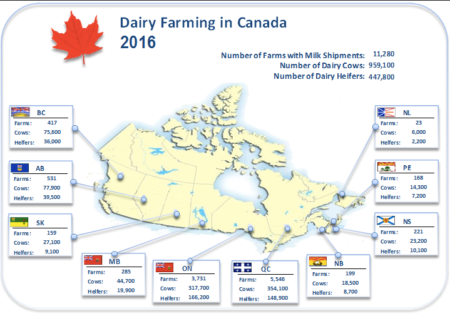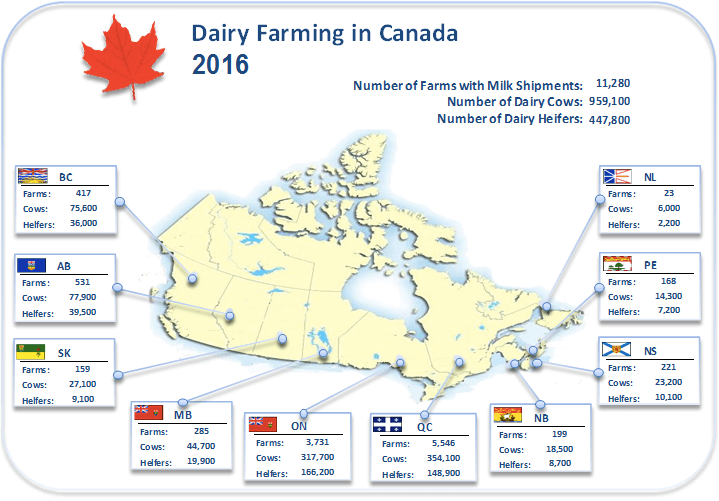By: Kate Barnett, University of Saskatchewan Student
Dairy farming has come a long way since the first mechanical milking machine was invented in 1860. Since then, dairy farming has become more efficient, cows are milked faster, milking many more cows per day. So in this increasing scale of efficiency, why are small family dairy farms still operating and not a thing of the past? In Canada, this is because of the dairy quota system. Canada’s quota system ensures that the market for dairy (milk, cheese, yogurt, ice-cream, etc.) remains at ‘equilibrium’, in which supply equals the expected demand. Farmers only get paid for what they produce in their quota. In this case, a farm cannot sell increased supply without buying more quota, which is not sold freely.
Currently, the United States wants to eliminate the Canadian dairy quota system. In a statement made by President Trump, he accuses “Canada for driving Wisconsin dairy farmers out of business with unfair practices”. Canada’s supply management system puts a 270 percent duty on imports of milk, making it economically unfeasible to export liquid milk to Canada. The US continues to export dairy products to Canada under the North American Free Trade (NAFTA) trade agreement and the duties. However, exporting milk as diafiltered or ultra-filtered allows the products to avoid the NAFTA. The invention of diafiltered or ultra-filtered milk was post-NAFTA, and therefore not incorporated in the tariff, allowing U.S. dairy farmers to export their milk at a low cost to Canadian processors. Canadian dairy producers are fighting this, saying it has cost them $200-million loss in revenue. To undercut the U.S. supply the Canadian dairy industry has had to sell milk protein ingredients at a lower price than the U.S. The Canadian government is not stopping the import of dairy into Canada, but simply offering Canadian processing plants to be supplied by Canadian dairy first, before processing plants look to imported milk to fill their demands.
What would the elimination of the quota system mean for Canadian consumers? It would mean that all Canadian dairy products would be rare. Currently, there are 11,280 Canadian dairy farms with a total of 959,100 producing dairy cows. This is minuscule amount compared to the U.S. which has 64,098 dairy farms with 9.328 million producing cows. Without the quota system, Canadian dairy farms may not be able to compete with the U.S. dairy industry, which may result in Canadian stores supplying American milk, not Canadian milk. In my opinion, this is taking $200 million out of the Canadian economy and placing it into the U.S. economy, is not only hurting Canadian dairy farmers but the Canadian economy as a whole.

While American dairy farmers claim that a Canadian dairy quota has hurt their industry, their industry is overpowering the Canadian industry. Canada should have equal opportunity to be a player in the dairy industry, without the supply management of dairy, Canada may not be able to compete. Keep our dairy industry supply managed, keep our dairy products Canadian!

Kate is in her final year at the University of Saskatchewan completing her Agribusiness degree. She has always been involved in agriculture whether it was working on her family’s cattle farm near Williams Lake, British Columbia, university, or summer jobs. When Kate graduates she plans to pursue a career in the Ag industry and share her passion for agriculture with others.


